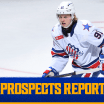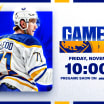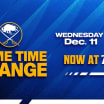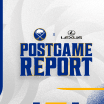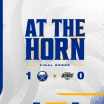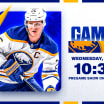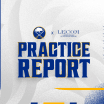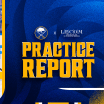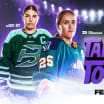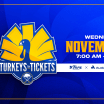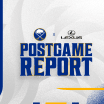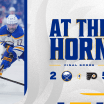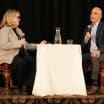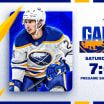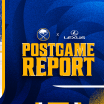The Sabres' amateur scouting staff begins with assistant general manager Randy Sexton, Jankowski, assistant director Jeff Crisp and director of collegiate scouting Jerry Forton. They have 13 dedicated amateur scouts who spent the past year watching and interviewing upwards of 200 players.
That's the pre-combine process. From now until the NHL Draft begins on June 21, the Sabres can bring in players who weren't invited to the combine for interviews and their own physical testing. Players who were present at the combine can visit for additional interviews.
So, while the 20-minute face-to-face sessions and testing results at the combine are valuable, they're just one ingredient in a lengthy evaluation process.
"It's trying to not overuse that information to make rash decisions because that's the last thing," Jankowski said. "If we work backwards, we've seen the physical testing, we've seen the interviews, which is the personality component. Now we go back another month to the hockey player.
"We can't let that other stuff override the hockey player, so we just have to be careful how we use it and how we adapt it, but it is good information to have. So, I think there's an equal weight between the personality side and the physical side and kind of blending it together."
The next step, in addition to meeting and working out more players, is debating and discussing the order of the team's draft list. That process will continue all the way through the morning of the first round, when the entire staff will hold one final meeting for last-minute adjustments.
The Sabres have eight picks in this year's draft. Two of those are in the first round, where they'll pick seventh and either 30th or 31st, depending on the outcome of the Stanley Cup Final. They have one pick in each of Rounds 3, 4 and 7 and a trio of picks in Round 6.
They adhere to their list throughout the draft, regardless of position, league or region. Here's how Sexton described the process behind ordering prospects at last year's draft:
"We don't draft by region; we don't draft by country," Sexton said. "We scour the world for the best players that we can find that play a style that we want to play going forward and then we work very diligently to learn as much as we can about them as human beings so that they map to our character criteria. Then we put them in the order that we think makes the most sense based on their probability to become a Sabre."
So, while there are strategical advantages to drafting out of Europe and the NCAA compared to the CHL because of those players' four-year signing windows (CHL players must be signed with two years of being drafted), any patterns that arise within a draft are simply circumstantial based on the list.
Setting that list will be a collaborative process, with all members of the scouting staff encouraged to promote their stances on players. Take Oskari Laaksonen, a pick out of Finland in 2017. He was left off NHL Central Scouting's pre-draft rankings, but the Sabres' regional scouts felt strongly enough about him to take him in the third round. He's coming off a season in which he played top-pair minutes for his pro team in Finland and won a gold medal at the World Junior Championship.
"It's healthy debate," Jankowski said. "It's talking things out, difference of opinions. We're all not going to see the same thing. We're going to have a difference of opinion, which is great. Just talk it out. Why do you see what you see? Why does another person see what he sees? Let's talk it out and come to what we feel is an appropriate projection."
This year's class is all but locked in at the top, with Jack Hughes and Kaapo Kakko expected to be taken with the top two picks. After that, the first round becomes unpredictable. That said, Jankowski said the class is deep enough that the Sabres can feel confident in bringing two strong assets into the organization in the first round.
"You don't know what other teams are thinking, so you really just want to focus on being prepared," he said. "You can walk through scenarios all you want about what's going to be there at seven. At the end of the day, what's going to be there at seven is there at seven. It's exciting, because it's a mixture of players and we'll have our order and we're excited to get the highest player we can in that order. In the end, it's about focusing on us and not worrying so much about what other teams are going to do or what mock drafts say."


